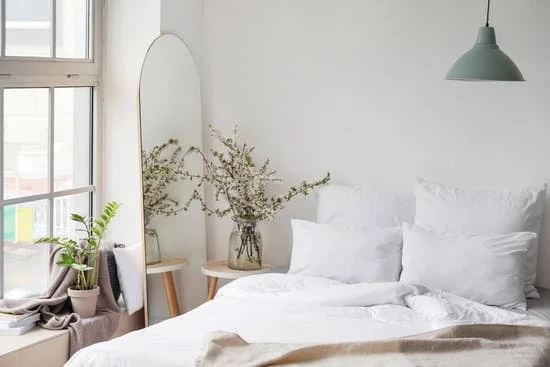Aboriginal home decor holds a significant place in the preservation of culture and heritage, allowing individuals to connect with the rich traditions of Indigenous communities. The use of traditional art forms and symbols in home decor not only adds a unique aesthetic to living spaces but also serves as a means of honoring and respecting Aboriginal cultures. From traditional art to contemporary interpretations, the influence of Aboriginal decor on interior design is undeniable.
The history of Aboriginal art dates back thousands of years, with artistic traditions being passed down through generations. This has resulted in a diverse range of art forms, including dot paintings, bark paintings, and intricate designs that hold great cultural significance. In recent years, there has been a growing appreciation for incorporating these art forms into home decor, adding depth and meaning to residential spaces.
By exploring the symbolism found in Aboriginal art and understanding its cultural and spiritual significance, individuals can create meaningful connections within their homes. From the use of symbols representing stories and traditions to incorporating natural elements like animals and plants, Aboriginal home decor provides an opportunity for self-expression while paying homage to Indigenous cultures.
Traditional Aboriginal Art in Home Decor
Forms of Traditional Aboriginal Art
Traditional Aboriginal art encompasses a wide range of forms, including dot painting, bark painting, rock art, and sand drawing. Each form has its own cultural and spiritual significance, reflecting the connection to the land, stories of creation, and the Dreaming. Dot painting, for example, represents ancestral stories and navigation of the land through intricate patterns of dots. Bark painting often depicts dreaming stories and is created using natural pigments on eucalyptus bark.
Incorporating Aboriginal Art Into Home Decor
Incorporating traditional Aboriginal art into home decor allows individuals to connect with indigenous cultures and support the preservation of their heritage. One way to do this is by displaying Indigenous artworks as wall art or incorporating them into textiles such as throw blankets or pillow covers. These pieces not only add a unique aesthetic to the home but also serve as a meaningful representation of Indigenous culture and traditions.
Respectful Representation
When incorporating traditional Aboriginal art into home decor, it is crucial to respect the cultural and spiritual significance of these pieces. It is important to understand the meaning behind each artwork and ensure that it has been ethically sourced from Indigenous artists or artisans. By learning about the stories and symbolism behind traditional Aboriginal art, homeowners can create spaces that honor Indigenous culture in a respectful manner while supporting Indigenous communities.
Symbolism in Aboriginal Home Decor
One of the most iconic forms of traditional Aboriginal art is dot painting, which features intricate patterns of carefully placed dots to create meaningful imagery. These dots can symbolize various aspects of nature, such as rivers, rainbows, or ancestral tracks. Additionally, bark painting is another traditional artistic expression that showcases symbolic representations of Dreamtime stories and spiritual beliefs.
Incorporating symbolism in Aboriginal home decor can be done through various mediums such as wall art, textiles, and even decorative objects like ceramics or sculptures. For example, adorning walls with paintings that feature symbolic motifs can bring a touch of cultural heritage into living spaces. Additionally, incorporating textiles with traditional designs can infuse a sense of storytelling and connection to the land within the home environment.
| Traditional Aboriginal Art Forms | Incorporating Symbolism in Home Decor |
|---|---|
| Dot Painting | Wall Art with Symbolic Motifs |
| Bark Painting | Ceramics or Sculptures Adorned with Traditional Designs |
While each symbol holds personal significance for Indigenous communities, it’s important for those outside the culture to educate themselves about the meanings behind these symbols before incorporating them into their living spaces. By doing so respectfully and with proper understanding, individuals can honor the rich heritage of Aboriginal art while supporting Indigenous artists and artisans in their creative endeavors.
Contemporary Aboriginal Home Decor
In recent years, there has been a growing trend towards incorporating contemporary interpretations of Aboriginal art into home decor. This modern approach to Aboriginal home decor includes a wide range of items, from furniture and lighting to accessories and textiles. These contemporary pieces not only add a unique and culturally rich aesthetic to interior design but also support Indigenous artists and designers.
When it comes to contemporary Aboriginal home decor, there are plenty of options to choose from. Here are some popular choices for integrating modern Aboriginal art into your home:
- Furniture: Statement pieces such as chairs, tables, and cabinets featuring Indigenous designs and motifs can become focal points in any room.
- Lighting: Pendant lights, floor lamps, and sconces with Aboriginal-inspired patterns or symbols can add a touch of cultural flair to the home.
- Accessories: From cushions and rugs to vases and wall hangings, there is no shortage of accessories that showcase contemporary Aboriginal art.
One of the key benefits of incorporating contemporary Aboriginal home decor into your living space is that it directly supports Indigenous artists and artisans. By purchasing these items from reputable sources, you are contributing to the preservation of Aboriginal culture while also promoting ethical and sustainable practices within the home decor industry.
Furthermore, embracing contemporary Aboriginal home decor allows individuals to engage with Indigenous culture in a respectful manner while celebrating artistic innovation. It’s important to seek out pieces that are authentic, made by Indigenous creators who have the right to share their heritage through their art. As consumers show an increased interest in meaningful cultural representations within their homes, it is crucial for businesses and brands to uphold these values when offering contemporary Aboriginal decor options.
Sourcing Authentic Aboriginal Decor
When it comes to decorating your home with authentic Aboriginal decor, it’s essential to understand the cultural and social significance of these pieces. Here are some tips for finding genuine Aboriginal home decor items:
1. Seek out Indigenous artists and artisans: Look for Indigenous-owned businesses and artists who create traditional Aboriginal art. By purchasing directly from these individuals, you not only support their livelihood but also ensure that the pieces are authentic and ethically sourced.
2. Visit Indigenous art galleries and markets: Many communities host art galleries and markets that showcase authentic Aboriginal art and crafts. These events provide an opportunity to meet artists, learn about the cultural significance of their work, and purchase unique pieces for your home.
3. Research online retailers carefully: If you’re unable to visit Indigenous-owned shops in person, take the time to research online retailers. Look for businesses that have a transparent supply chain and a commitment to fair trade practices. Avoid mass-produced items that appropriate Aboriginal culture without any connection to the community.
By following these guidelines, you can enrich your living space with meaningful and authentic Aboriginal home decor while supporting Indigenous artists and communities.
4. Join ethical consumer platforms: There are platforms dedicated to promoting ethical consumerism, including when it comes to buying Indigenous art. Consider joining these platforms or seeking out recommended vendors who prioritize ethical sourcing practices in their business operations.
DIY Aboriginal Home Decor Projects
Creating your own Aboriginal-inspired home decor can be a meaningful way to connect with Indigenous culture and add a unique touch to your living space. From dreamcatchers to painted pots, there are various DIY projects that allow you to incorporate Aboriginal art into your home decor. Not only does this provide an opportunity for creative expression, but it also allows for a deeper understanding and appreciation of the cultural significance behind these art forms.
One popular DIY project is making dreamcatchers, which have origins in Ojibwe and Lakota traditions. Dreamcatchers are believed to filter out bad dreams and allow good dreams to pass through the center, bringing positive energy to the sleeper.
By learning about the history and purpose of dreamcatchers, individuals can create their own with respect and awareness of its cultural roots. Similarly, painting terracotta pots with traditional Aboriginal designs or using indigenous patterns in macrame wall hangings are other ways to infuse Aboriginal art into your home decor in a respectful manner.
When undertaking DIY Aboriginal home decor projects, it’s essential to do so with reverence for the culture and heritage behind these art forms. Taking the time to research the symbolism and significance of different Aboriginal designs ensures that your creations are not only visually appealing but also carry a deeper meaning. By approaching these projects with cultural sensitivity, individuals can honor and celebrate Indigenous traditions while adding a personal touch to their living space.
In addition, participating in DIY projects focused on aboriginal home decor offers individuals an opportunity for cultural education and appreciation in a practical application. This increases awareness of aboriginal practices as well as encourages respect for their beliefs among consumers within modern society. Moreover, this creates an environment open-mindedness about diversity in terms of spirituality and lifestyle practices worldwide.
| Project | Cultural Significance |
|---|---|
| Dreamcatchers | Believed to filter out bad dreams as per Ojibwe & Lakota traditions |
| Painted Pots | Honors traditional Australian designs by incorporating them into interior design |
| Macrame Wall Hangings | Use indigenous patterns as part of wall decorations encouraged being aware of artistic meaning |
Cultural Sensitivity and Appropriation
When it comes to incorporating Aboriginal art into home decor, it is crucial to approach the practice with cultural sensitivity and respect. The symbols, motifs, and designs found in traditional Aboriginal art carry deep cultural and spiritual significance for Indigenous communities. As such, it is important for non-Indigenous individuals to educate themselves about the meanings behind these artistic elements before using them in their homes.
Respecting Aboriginal Culture
Before incorporating Aboriginal home decor into your living space, take the time to learn about the cultural and spiritual significance of the art you are interested in. This may involve researching specific symbols, understanding their meanings within the context of different Indigenous cultures, and recognizing their importance in preserving heritage and traditions. By approaching Aboriginal home decor with respect and understanding, individuals can show appreciation for the art while also honoring its cultural roots.
Avoiding Cultural Appropriation
It is essential to avoid cultural appropriation when engaging with Aboriginal home decor. This means refraining from using Indigenous art in a way that disrespects or misrepresents its original meaning. As a general rule, it is best to purchase authentic Aboriginal decor directly from Indigenous artists or businesses that ethically source these products. Additionally, consider supporting initiatives that give back to Indigenous communities or contribute towards preserving their cultural heritage.
By being mindful of cultural sensitivity and avoiding appropriation, individuals can create a space that honors and celebrates Aboriginal art while also actively supporting Indigenous communities in the home decor industry.
Showcasing Aboriginal Home Decor Businesses
In conclusion, Aboriginal home decor is not just about adding style and beauty to a space, but also about preserving and celebrating the rich culture and heritage of Indigenous peoples. The significance of traditional Aboriginal art in home decor cannot be overstated, as it provides a powerful connection to the land, nature, and spirituality of the Aboriginal people.
From dot painting to bark painting, these traditional art forms bring a sense of history and storytelling into modern homes, making them truly unique.
Additionally, incorporating symbolism from Aboriginal art into home decor adds layers of meaning and significance to the space. Each symbol holds cultural and spiritual importance for the Aboriginal people, making them not just decorative elements but profound expressions of their beliefs and values. It is essential to understand and respect the depth of meaning behind these symbols when integrating them into home decor.
Moreover, supporting Indigenous-owned home decor businesses that offer authentic Aboriginal decor is crucial in promoting ethical and sustainable practices. By purchasing directly from Indigenous artists and artisans, we can contribute to the preservation of their culture while also ensuring that they receive fair compensation for their work.
Ultimately, showcasing Aboriginal home decor businesses is about more than just decorating one’s living space – it’s a way to honor and uplift Indigenous communities while embracing their artistry and creativity within our homes.
Frequently Asked Questions
What Is the Aboriginal Art Style Called?
The Aboriginal art style is called dot painting, which involves using a series of dots to create intricate and vibrant patterns. This traditional technique has been used by Indigenous Australians for thousands of years.
What Do the Aboriginal Colors Mean?
In Aboriginal art, colors hold deep meanings and symbolism. For example, red can represent the earth or fire, while yellow may symbolize the sun or life force. White often signifies water or clouds, and black may represent people or animals.
What Is the Most Common Aboriginal Art?
One of the most common forms of Aboriginal art is rock paintings, which are found in various parts of Australia. These ancient artworks depict stories, rituals, and daily life, offering insights into Indigenous culture and traditions. The imagery varies depending on the region and its specific cultural practices.

I’m thrilled to be your companion on this exciting journey through the world of home decor and design. With a passion for turning houses into homes and a keen eye for the finer details, I’m here to help you transform your living spaces into beautiful, functional, and meaningful havens.





